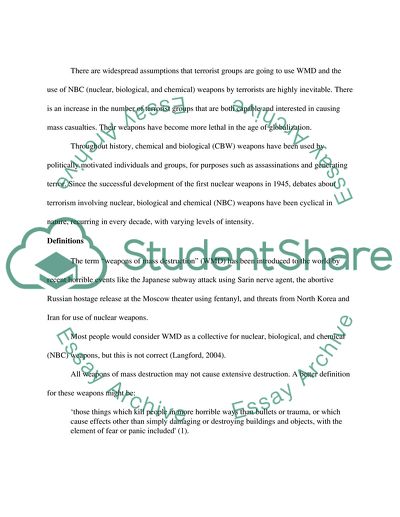Cite this document
(“Weapons Of Mass Destruction Research Paper Example | Topics and Well Written Essays - 2750 words”, n.d.)
Weapons Of Mass Destruction Research Paper Example | Topics and Well Written Essays - 2750 words. Retrieved from https://studentshare.org/social-science/1565734-weapons-of-mass-destruction
Weapons Of Mass Destruction Research Paper Example | Topics and Well Written Essays - 2750 words. Retrieved from https://studentshare.org/social-science/1565734-weapons-of-mass-destruction
(Weapons Of Mass Destruction Research Paper Example | Topics and Well Written Essays - 2750 Words)
Weapons Of Mass Destruction Research Paper Example | Topics and Well Written Essays - 2750 Words. https://studentshare.org/social-science/1565734-weapons-of-mass-destruction.
Weapons Of Mass Destruction Research Paper Example | Topics and Well Written Essays - 2750 Words. https://studentshare.org/social-science/1565734-weapons-of-mass-destruction.
“Weapons Of Mass Destruction Research Paper Example | Topics and Well Written Essays - 2750 Words”, n.d. https://studentshare.org/social-science/1565734-weapons-of-mass-destruction.


